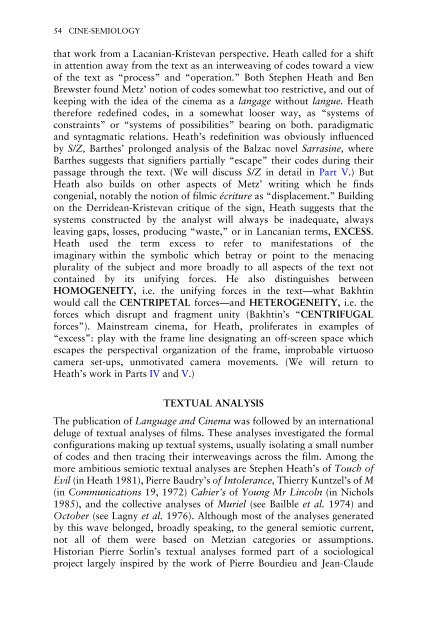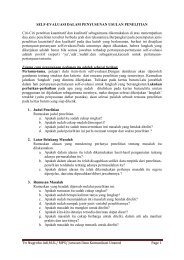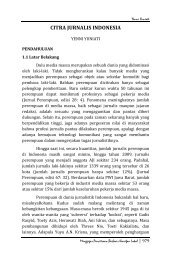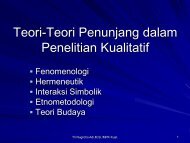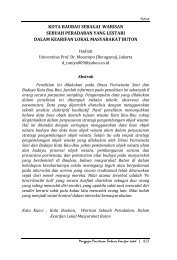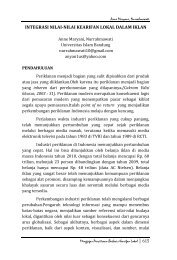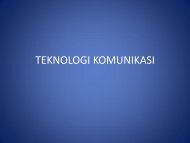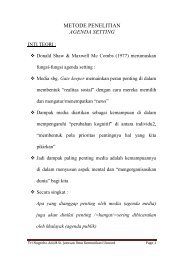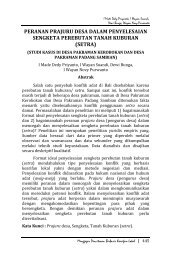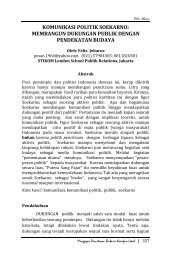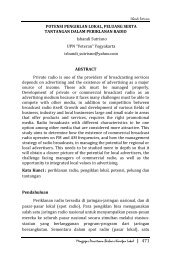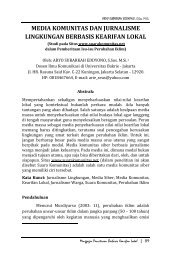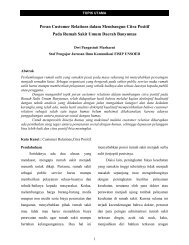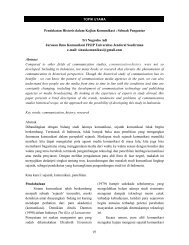New Vocabularies in Film Semiotics
New Vocabularies in Film Semiotics
New Vocabularies in Film Semiotics
Create successful ePaper yourself
Turn your PDF publications into a flip-book with our unique Google optimized e-Paper software.
54 CINE-SEMIOLOGY<br />
that work from a Lacanian-Kristevan perspective. Heath called for a shift<br />
<strong>in</strong> attention away from the text as an <strong>in</strong>terweav<strong>in</strong>g of codes toward a view<br />
of the text as “process” and “operation.” Both Stephen Heath and Ben<br />
Brewster found Metz’ notion of codes somewhat too restrictive, and out of<br />
keep<strong>in</strong>g with the idea of the c<strong>in</strong>ema as a langage without langue. Heath<br />
therefore redef<strong>in</strong>ed codes, <strong>in</strong> a somewhat looser way, as “systems of<br />
constra<strong>in</strong>ts” or “systems of possibilities” bear<strong>in</strong>g on both. paradigmatic<br />
and syntagmatic relations. Heath’s redef<strong>in</strong>ition was obviously <strong>in</strong>fluenced<br />
by S/Z, Barthes’ prolonged analysis of the Balzac novel Sarras<strong>in</strong>e, where<br />
Barthes suggests that signifiers partially “escape” their codes dur<strong>in</strong>g their<br />
passage through the text. (We will discuss S/Z <strong>in</strong> detail <strong>in</strong> Part V.) But<br />
Heath also builds on other aspects of Metz’ writ<strong>in</strong>g which he f<strong>in</strong>ds<br />
congenial, notably the notion of filmic écriture as “displacement.” Build<strong>in</strong>g<br />
on the Derridean-Kristevan critique of the sign, Heath suggests that the<br />
systems constructed by the analyst will always be <strong>in</strong>adequate, always<br />
leav<strong>in</strong>g gaps, losses, produc<strong>in</strong>g “waste,” or <strong>in</strong> Lancanian terms, EXCESS.<br />
Heath used the term excess to refer to manifestations of the<br />
imag<strong>in</strong>ary with<strong>in</strong> the symbolic which betray or po<strong>in</strong>t to the menac<strong>in</strong>g<br />
plurality of the subject and more broadly to all aspects of the text not<br />
conta<strong>in</strong>ed by its unify<strong>in</strong>g forces. He also dist<strong>in</strong>guishes between<br />
HOMOGENEITY, i.e. the unify<strong>in</strong>g forces <strong>in</strong> the text—what Bakht<strong>in</strong><br />
would call the CENTRIPETAL forces—and HETEROGENEITY, i.e. the<br />
forces which disrupt and fragment unity (Bakht<strong>in</strong>’s “CENTRIFUGAL<br />
forces”). Ma<strong>in</strong>stream c<strong>in</strong>ema, for Heath, proliferates <strong>in</strong> examples of<br />
“excess”: play with the frame l<strong>in</strong>e designat<strong>in</strong>g an off-screen space which<br />
escapes the perspectival organization of the frame, improbable virtuoso<br />
camera set-ups, unmotivated camera movements. (We will return to<br />
Heath’s work <strong>in</strong> Parts IV and V.)<br />
TEXTUAL ANALYSIS<br />
The publication of Language and C<strong>in</strong>ema was followed by an <strong>in</strong>ternational<br />
deluge of textual analyses of films. These analyses <strong>in</strong>vestigated the formal<br />
configurations mak<strong>in</strong>g up textual systems, usually isolat<strong>in</strong>g a small number<br />
of codes and then trac<strong>in</strong>g their <strong>in</strong>terweav<strong>in</strong>gs across the film. Among the<br />
more ambitious semiotic textual analyses are Stephen Heath’s of Touch of<br />
Evil (<strong>in</strong> Heath 1981), Pierre Baudry’s of Intolerance, Thierry Kuntzel’s of M<br />
(<strong>in</strong> Communications 19, 1972) Cahier’s of Young Mr L<strong>in</strong>coln (<strong>in</strong> Nichols<br />
1985), and the collective analyses of Muriel (see Bailble et al. 1974) and<br />
October (see Lagny et al. 1976). Although most of the analyses generated<br />
by this wave belonged, broadly speak<strong>in</strong>g, to the general semiotic current,<br />
not all of them were based on Metzian categories or assumptions.<br />
Historian Pierre Sorl<strong>in</strong>’s textual analyses formed part of a sociological<br />
project largely <strong>in</strong>spired by the work of Pierre Bourdieu and Jean-Claude


